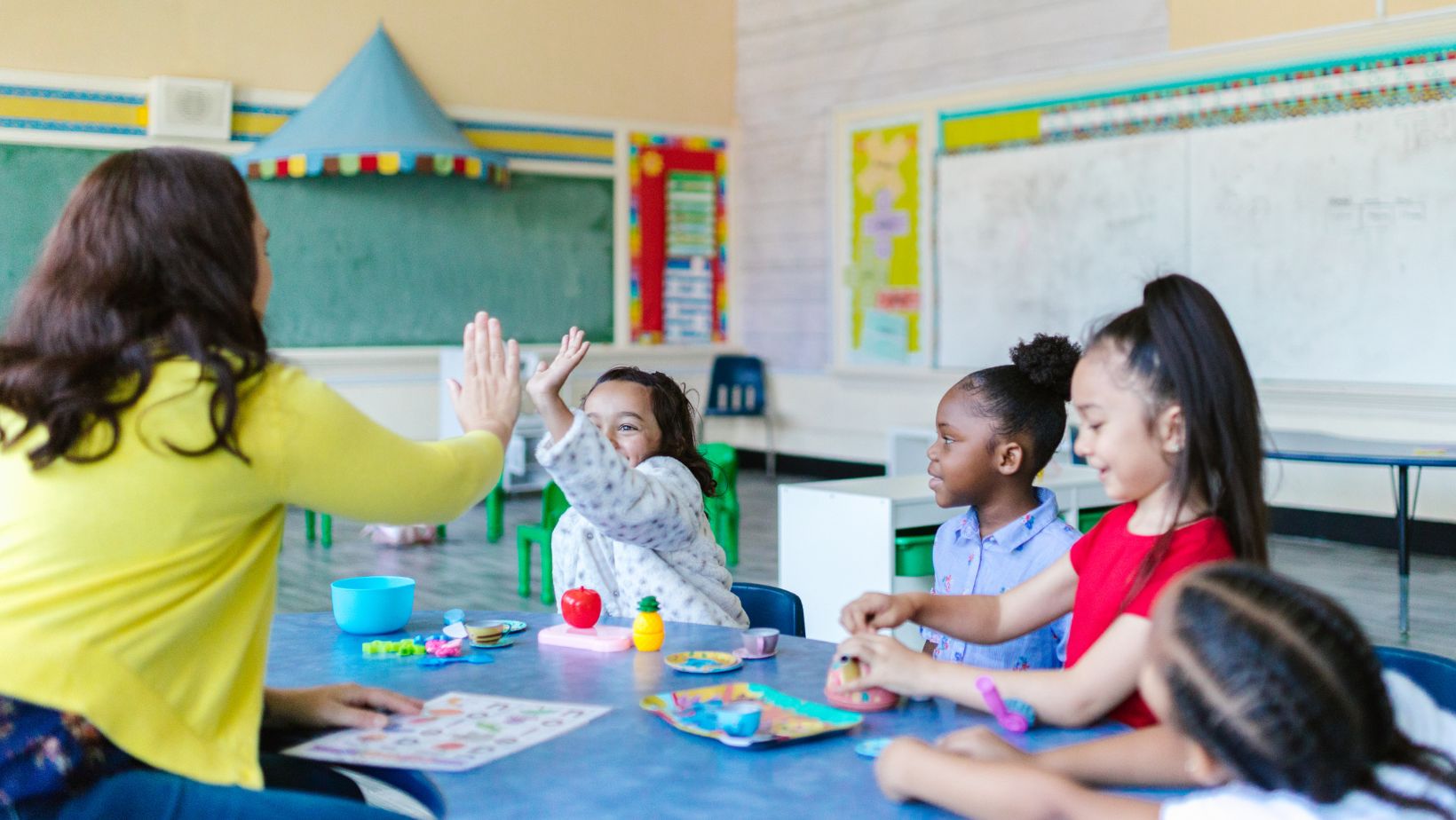Want to create a classroom environment where students are engaged and excited to learn?
School soft seating options are transforming classrooms across the UK. Educators are replacing rows of hard desks with dynamic seating arrangements that support natural movement and choice. The result?
Students are more focused, collaborative, and eager to learn.
But here’s the problem.
Traditional seating arrangements aren’t based on how children actually learn. They need to move, make choices, and feel comfortable to stay engaged all day.
In this article, you’ll learn about how innovative school soft seating options can support child development and create effective learning spaces.
You’ll discover:
- How Soft Seating Supports Child Development
- The Science Behind Flexible Learning Spaces
- The Key Benefits of School Soft Seating Options
- How to Implement Soft Seating in Your Classroom
How Soft Seating Supports Child Development
Soft seating doesn’t just provide comfort, it creates the perfect learning environment to allow children to flourish physically, mentally, and emotionally.
Hard chairs force students into unnatural positions for hours on end. Children become restless, fidgety, and disengaged. The beauty of modular soft seating is that it provides options that allow children to adjust their position naturally throughout the day.
No more forcing students to sit in a single uncomfortable spot. With soft seating, they can sit cross-legged, lean back or even lie down while reading. It allows movement to support natural learning processes.
Children also have different sensory needs. Some need to bounce gently on a cushion to focus. Others feel calmest when the deep pressure of a beanbag hugs them. School soft seating options create this variety so all children can find what works for them.
The most important thing to know is:
Soft seating options for schools can support child development. Because they encourage proper posture, allow children to move comfortably, and give children choice. Children’s brains need to be able to pump blood and get oxygen to stay alert and engaged.
Children who can shift and move during the day are more likely to have stable blood circulation and oxygen flow to the brain. And this is what directly impacts their concentration and cognitive performance.
The Science Behind Flexible Learning Spaces
Studies show that flexible seating options have a significant impact on student performance and wellbeing.
Researchers at the University of Minnesota found that classrooms with collaborative seating arrangements had 48% more student discussion than lecture-style setups. That’s a huge boost in engagement and interaction from just changing the way furniture was arranged.
Student choice in seating develops ownership and self-regulation skills and has a positive impact on their motivation. Texas Christian University research found that 78% of students reported better concentration with flexible seating.
Remember. Adults don’t sit in hard plastic chairs for hours a day at work.
Why should we expect children to be able to do the same?
Modern offices have comfortable couches, standing desks, and break areas that support focus and collaboration. Schools are now starting to follow this lead by incorporating soft seating that mirrors real world environments.
The Key Benefits of School Soft Seating Options
Let’s take a closer look at how school soft seating options support multiple areas of child development.
Better Focus and Concentration
Children need to move in order to learn effectively.
Soft seating provides that movement without even leaving their seat. Wobbling, rocking and shifting improves blood flow and oxygen to the brain, directly influencing cognitive function.
Students who can move to channel their energy are less likely to become distracted and disruptive. When they have movement options to self-regulate and refocus, they’re able to stay on-task more effectively.
Improved Collaboration Skills
Soft seating naturally creates a more collaborative environment in the classroom.
Students turn towards each other on the floor cushions and large ottomans. They make more eye contact and are more likely to engage in discussion and group work. Soft seating builds important social skills and emotional intelligence.

Students can also easily reconfigure soft seating arrangements to support different learning activities. They quickly form groups and cluster in new ways throughout the day.
Increased Emotional Wellbeing
Comfort and welcoming spaces are important to student wellbeing.
Soft seating makes classrooms feel more like a student-centred space. The attention paid to their comfort and enjoyment of the space creates a more positive emotional connection. Students who feel safe and comfortable are more likely to take academic risks and engage actively in learning.
Students with stress, anxiety and other social-emotional issues benefit greatly from cozy reading nooks and soft seating areas where they can self-regulate and refocus.
Accommodating Different Learning Styles and Needs
Every classroom is made up of students with different learning preferences and sensory needs.
School soft seating options provide the variety and diversity to support these needs. Students with ADHD may need to move in their seat. Children with autism may prefer a sensory-seeking deep pressure beanbag chair. Visual learners often need to sprawl on the floor to see their work.
Providing variety with soft seating allows children to make choices about how to best work at that moment. This is what creates truly inclusive learning environments where all children can thrive.
Self-Regulation Skills
Student choice about seating develops self-regulation skills.
Children assess their own needs and make decisions about their learning space. This develops self-awareness of what they need at that moment. Whether they need to move, have quiet space, or are ready to work with others.
The ability to self-regulate transfers into other areas of development. Children who can make choices about their seat become better at recognising their emotions and self-helping to be able to focus and succeed.
How to Implement Soft Seating in Your Classroom
School soft seating options don’t need to be overwhelming or expensive.
Introduce a few elements to your existing classroom and start small. A reading corner with floor cushions or a group area with large ottomans can have an immediate impact.
Here’s what to keep in mind:
Teachers will need to establish expectations about how soft seating is used. This includes how to care for the furniture, the choices they can make, and that it’s a privilege that comes with responsibility.
Teachers have had great success by only allowing students to choose soft seating when they have earned it by positive behaviour. Others make soft seating freely available but have clear consequences for misuse.
The most important thing is to find what works for your students and teaching style. Some classrooms are best with a fully flexible environment where students choose their spot every day. Others work better with assigned spots that change periodically.
Start with these practical tips:
Begin in one area of your classroom and then gradually introduce more soft seating. This gives you and your students time to adjust to the change.
Choose materials that are durable, easy to clean and can stand up to daily use by students. Furniture should be age appropriate in size and style for your class.
Create zones for different activities with various soft seating options. A quiet reading nook with plush seating, group area with floor cushions and traditional table area for individual seatwork.
Mix soft seating with other furniture so that students have genuine options in how they sit and arrange themselves each day.
Wrapping It All Up
School soft seating options for flexible learning spaces are changing how children learn and develop in educational settings. Soft seating provides comfort, movement, and choices to create a classroom where children can really thrive.
It’s not just about comfort though. Soft seating options have been proven to enhance concentration, collaboration, emotional wellbeing and self-regulation. Inclusive classrooms that support diverse learning styles and prepare children for success.
Adopting soft seating options doesn’t have to be difficult or expensive. Start small and expand over time as you see what works best for your students and teaching style.
The old-school classroom with rows of hard chairs and desks is becoming a thing of the past. Modern educators know that children need flexibility, comfort and choice to reach their full potential. Soft seating options for schools are paving the way for creating learning environments that enhance child development and academic achievement.
